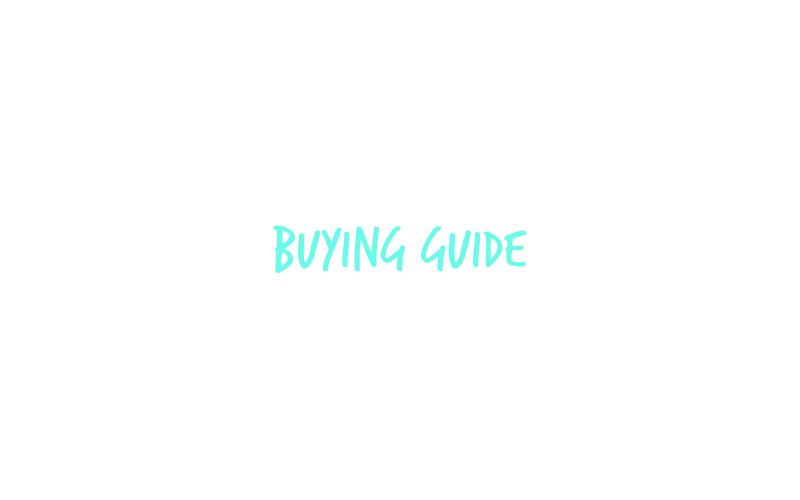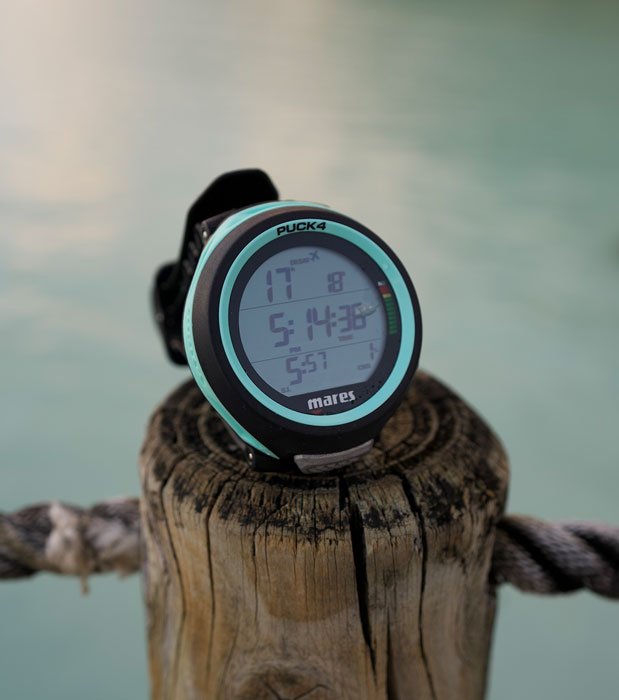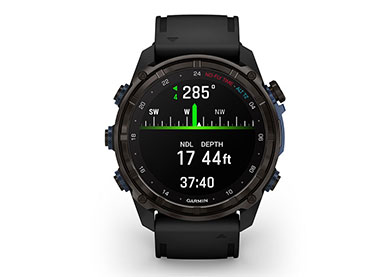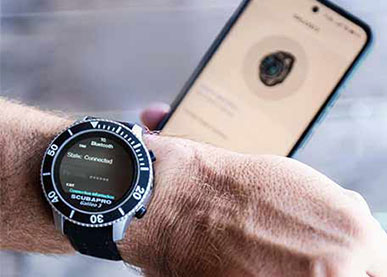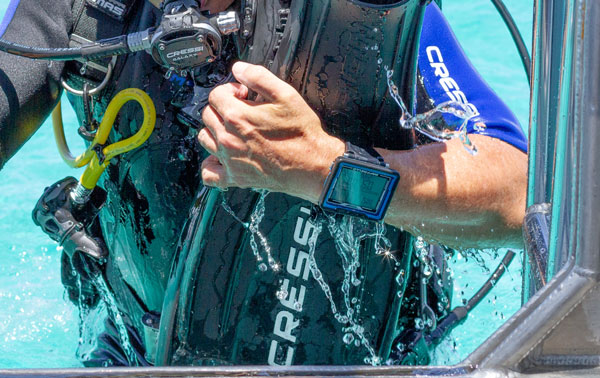Dive Computers Buying Guide
A dive computer is one of the most important pieces of equipment a diver can own. It tracks your depth, time, ascent rate, and nitrogen levels, giving you real-time data to keep your dives safe and efficient. Whether you're buying your first computer or upgrading to a more advanced model, this guide will help you choose the right dive computer based on your diving style, budget, and must-have features.
Why You Need a Dive Computer
A dive computer is more than just a convenience — it’s a critical safety tool that provides real-time monitoring and helps you make smarter, safer decisions underwater. Whether you’re diving a shallow reef or a deep wreck, your computer tracks the data your body depends on.
Key Benefits:
- Real-Time Decompression Tracking: More accurate than dive tables, with personalized no-deco limits.
- Ascent Rate Monitoring: Alerts you if you’re ascending too quickly—critical for avoiding DCS.
- Surface Interval & No-Fly Time: Automatically tracks your off-gassing time and recommends safe intervals between dives and flights.
- Nitrox & Multi-Gas Support: Most models let you dive with enriched air; advanced computers support gas switching.
- Digital Dive Logging: Stores hundreds of dives and syncs with your phone or computer.
- Optional Features: Some include air integration, compasses, or dive planning tools for extra convenience and safety.
Top Rated Dive ComputersShop All
Types of Dive Computers
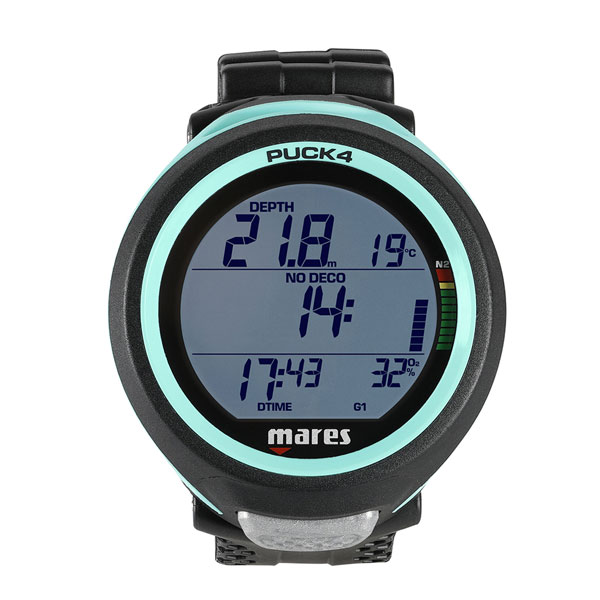
Wrist Dive Computers
Worn like a watch or slightly larger, these are the most popular and versatile style.
- Best for: Recreational, advanced, and technical divers.
- Pros: Lightweight, easy to read, many have built-in compass and air integration.
- Popular models: Garmin Descent Mk3, Shearwater Peregrine, Mares Puck.
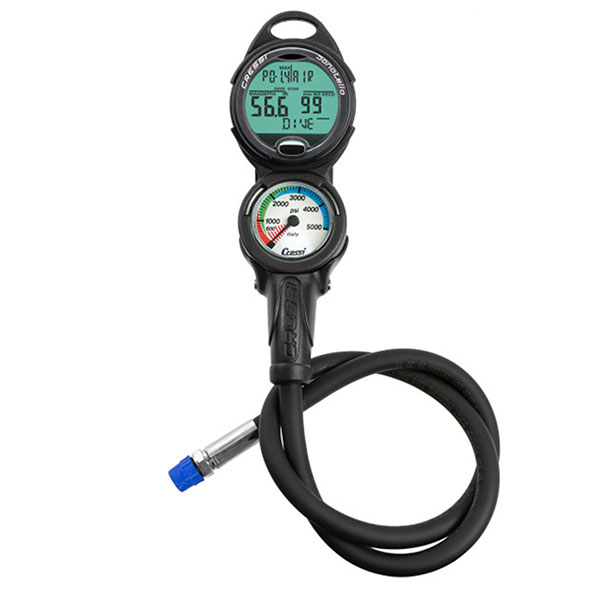
Console Dive Computers
Attached to your regulator first stage and often integrated with pressure and compass gauges.
- Best for: Divers who prefer a single unit or already use a console.
- Pros: Easy to monitor with other vital gauges, less likely to get lost.
- Popular models: Cressi Leonardo Console, Oceanic Pro Plus 4.0, Mares Mission Puck 3.
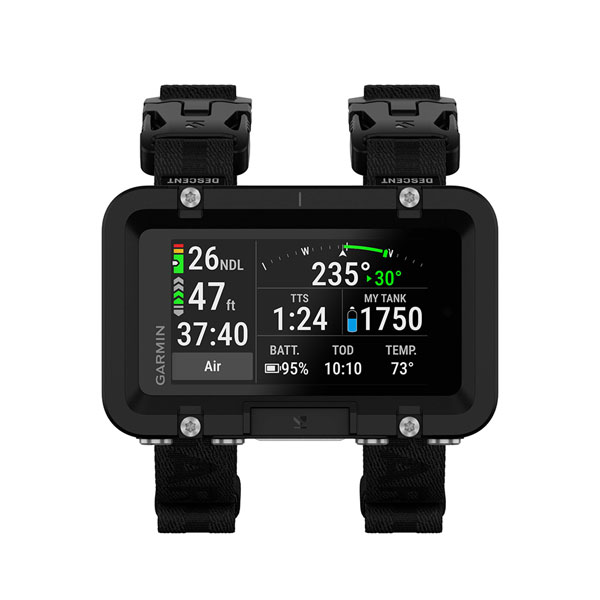
Air-Integrated Dive Computers
These computers connect directly to your tank pressure and calculate your remaining air time.
- Best for: Divers who want real-time gas monitoring and a streamlined setup.
- Pros: Increases safety by tracking gas consumption, reduces the need for separate SPGs, often includes multi-gas support.
- Popular models: Garmin Descent Mk3i with T2 transmitter, Shearwater Perdix 2 AI.

Key Features to Consider
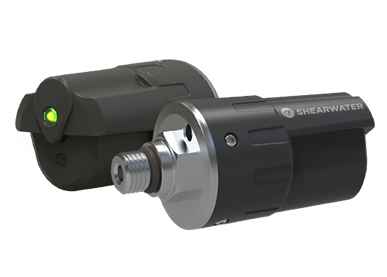
Air Integration
Monitors your tank pressure wirelessly and calculates your remaining air time based on your depth and consumption.
Ideal for: Divers who want streamlined gear and enhanced safety.
Look for: Models with Bluetooth transmitter or paired pod systems (e.g., Garmin T2, Suunto Tank Pod).
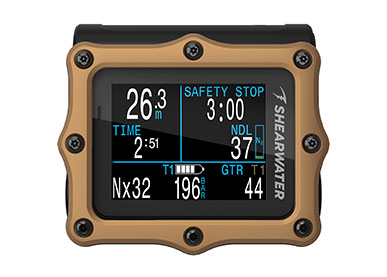
Nitrox and Trimix Support
Most modern computers support Nitrox, and many technical models support Trimix for deeper, mixed-gas dives.
Look for: Adjustable O2 percentages and multiple gas-switching capabilities.
- Ideal for: Enriched Air Nitrox divers and Technical divers
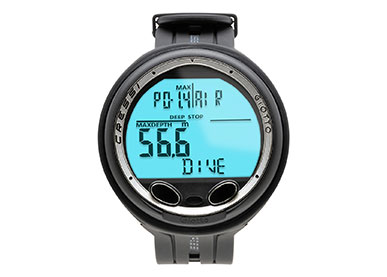
Dive Modes
Air – For standard recreational diving.
Nitrox – For enriched air diving.
Gauge – Acts as a depth timer without deco calculations.
Freedive – For breath-hold diving (with fast sampling rates).
CCR (Closed-Circuit Rebreather) – For advanced technical diving.
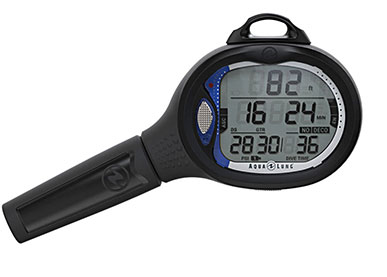
Algorithms
Each brand uses proprietary algorithms. Popular ones include:
Bühlmann ZHL-16C – Used in Shearwater and Garmin for conservatism control.
RGBM (Reduced Gradient Bubble Model) – Common in Suunto, Mares, and Cressi computers.
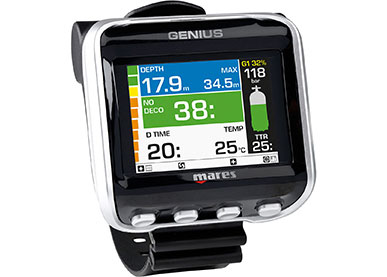
Display & Readability
Color vs Monochrome – Color screens are easier to read, especially in low light.
Backlight or Always-On – Important for night or deep diving.
Big digits – Crucial for aging eyes or divers in murky waters.
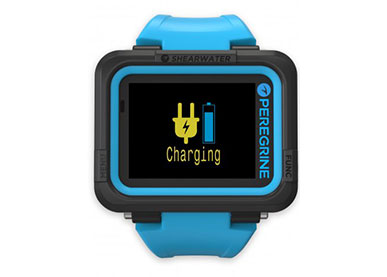
Rechargeable vs Replaceable Battery
Rechargeable – Convenient, eco-friendly. Common in watch-style computers.
Replaceable (User-Changeable) – Handy for remote diving trips where charging isn’t an option.

